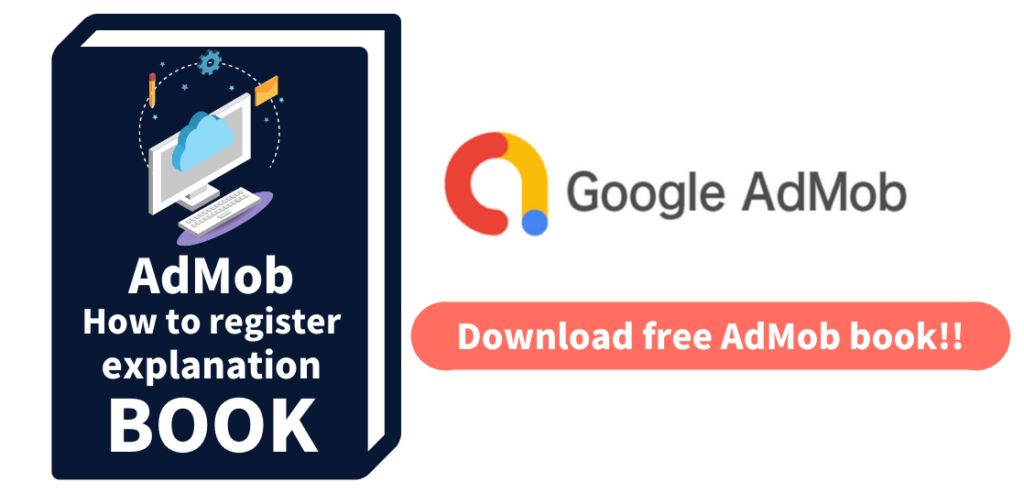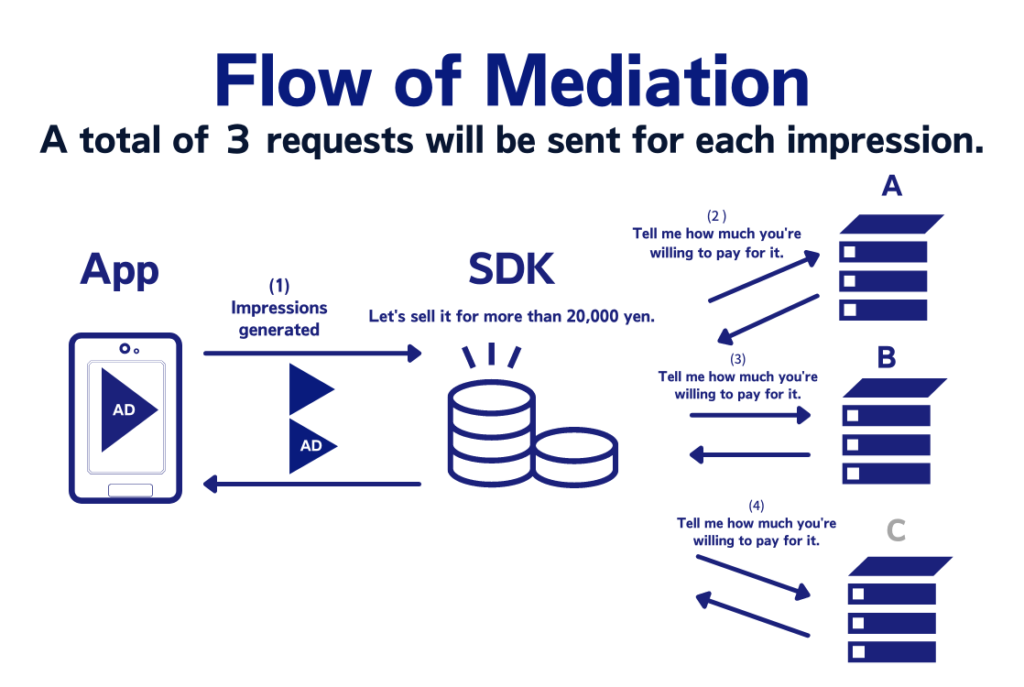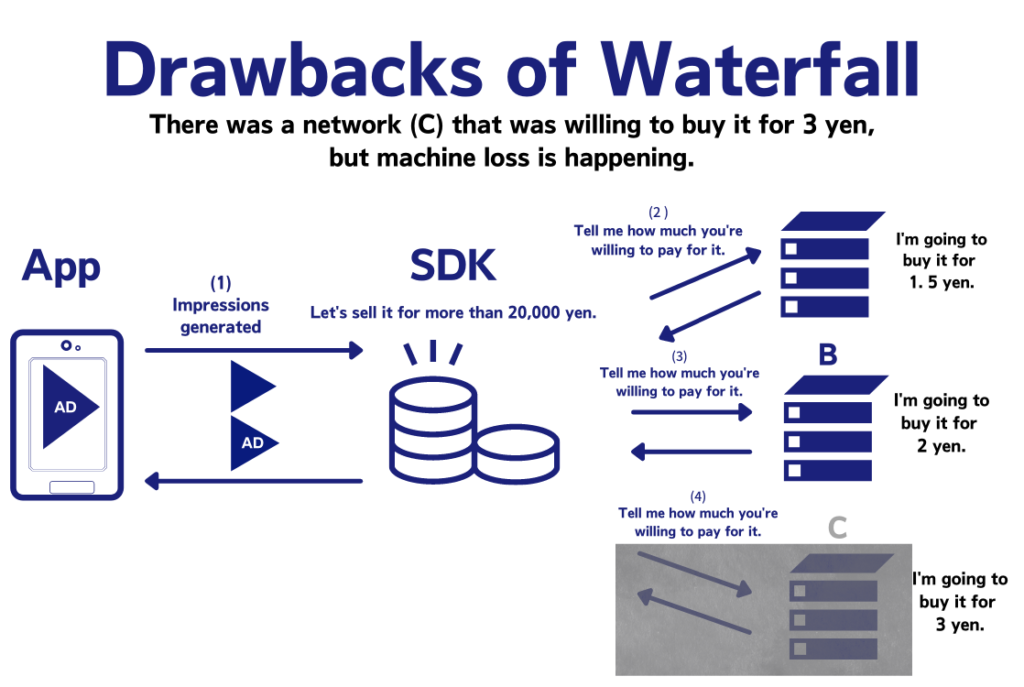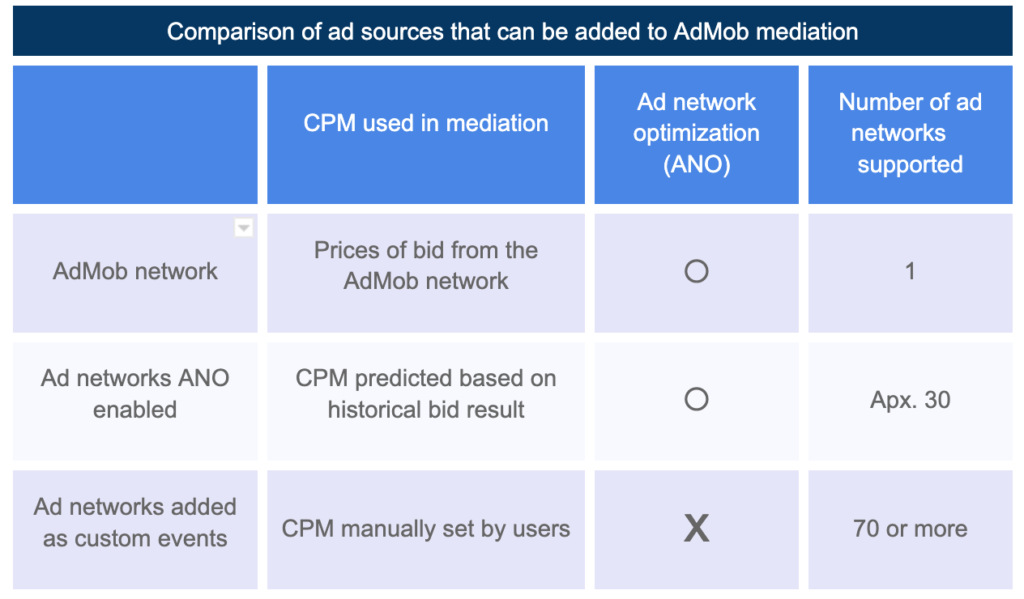Everyone who’s somewhat familiar with AdMob could be wondering: “How can I maximize earnings?” Let me get straight to the point to answer it: you just need to improve each factor that determines earnings. As many of you know, earnings are determined as below:
< Earnings = number of times ads are shown (impressions) x price per ad unit >
So, increasing the number of impressions or the price per unit will lead to higher earnings. Let’s say we want to increase our earnings by 1.5 times, for example. The numbers of impressions is mainly determined by the numbers of app users and ad units. It’s not realistic to immediately increase the number of users by 1.5 times and increasing the numbers of ad units may cause loss of users.
Considering these, the best approach is to increase the price per unit, i.e. earnings per ad shown. To do this, you might need to get into mediation that drives higher revenue, and in the following two volumes we’ll cover everything from setting it up to checking its performance.
Besides this instruction, we are also distributing a free of charge ebook on AdMob mediation.

Index:
1.What’s AdMob mediation?
2.What’s the mechanism of mediation
3.Key points on handling mediation
1. What’s AdMob mediation?
Mediation is a feature of AdMob that allows you to manage all ad networks that serve ads in your app in one place. Mediation sends ad requests to multiple ad networks, ensuring that the best ad network is found before an ad is shown. Mediation uses mediation groups to rank all ad networks based on optimized ad placement results in the past to maximize earnings. In one case, mediation has increased eCPM by 20-30% for an app. The cause of increase in earnings is that mediation forces bidders for ad units to compete with each other.

2. What’s the mechanism of mediation?
Mediation requests multiple networks for an ad. These requests are not made at once, but rather each network is requested individually, and when a price above the floor price (the minimum accepted amount they are willing to sell the ad units for) is bid, the ad from the bidder will be placed on the app. This way of ad serving is called waterfalling because of the waterfall-like process in which ad requests are passed through a list of bids from top to bottom.
However, this method cannot respond to higher-priced bids that come in after ads to be shown have been determined. Once an impression is filled, even if bids from the subsequent bidders are higher than the threshold price, the other bids are never considered and the ones identified earlier will be placed. Thus, the fixed order of the bidder lists could cause publishers to miss out on higher value bids.

AdMob mediation helps you avoid losing opportunities and maximizes your earnings as discussed in the next section.
3. Key points on handling mediation
AdMob mediation uses three different types of ad networks. The first type is the AdMob network which, of course, is AdMob’s own ad network. The second type are third-party ad networks, they’re external ad networks that automatically optimize CPM and that can be automatically connected to AdMob. And the third type, although it’s also a form of third-party ad networks, is called custom event and doesn’t have adapters or other functionalities that correspond to AdMob, and the network users manually set CPM.
AdMob predicts the bid prices of these three ad network types in advance and sorts bids from each of them accordingly, starting with the highest bid. With this bid price prediction and sorting, AdMob avoids missing out on higher bid prices, as in previously described waterfalling, where bids are not ordered by prices.
To sort the bids, besides taking bid prices from the AdMob network that it naturally knows in advance, as well as taking prices of custom events set manually by users, AdMob predicts bid prices of third-party ad networks that automatically optimizes CPM, based on their historical performance.
One point to note when using third-party ad networks is that while regular third-party networks have a small margin of error thanks to the AdMob’s high accuracy predictions, custom events are prone to quite a bit of error in case bid price settings are manually updated before ad requests.

Finally, these are the key takeaways about mediation:
1.Mediation is done in a waterfall model.
2.Failure to properly set the waterfall order when the ad request is generated will result in missing out on higher price bids.
3.CPM settings for custom events, which are a form of external ad networks that can be added to the
mediation, are set manually.
4.If custom events are added to the mediation, it’s necessary to check frequently for any difference between the set CPM and the actual bid price
Due to the complexity of dealing with custom events, we recommend using an ad network with ANO if you use mediation for the first time. Click here for the list of ad networks with ANO.
Want to know more tips to set an effective mediation or find the appropriate ad network for your app? Just contact us. We’ll be happy to support you.

Up next, in the second part on AdMob mediation, we’ll explore step by step how to set up mediation specifically and how to check earnings from networks in mediation.




